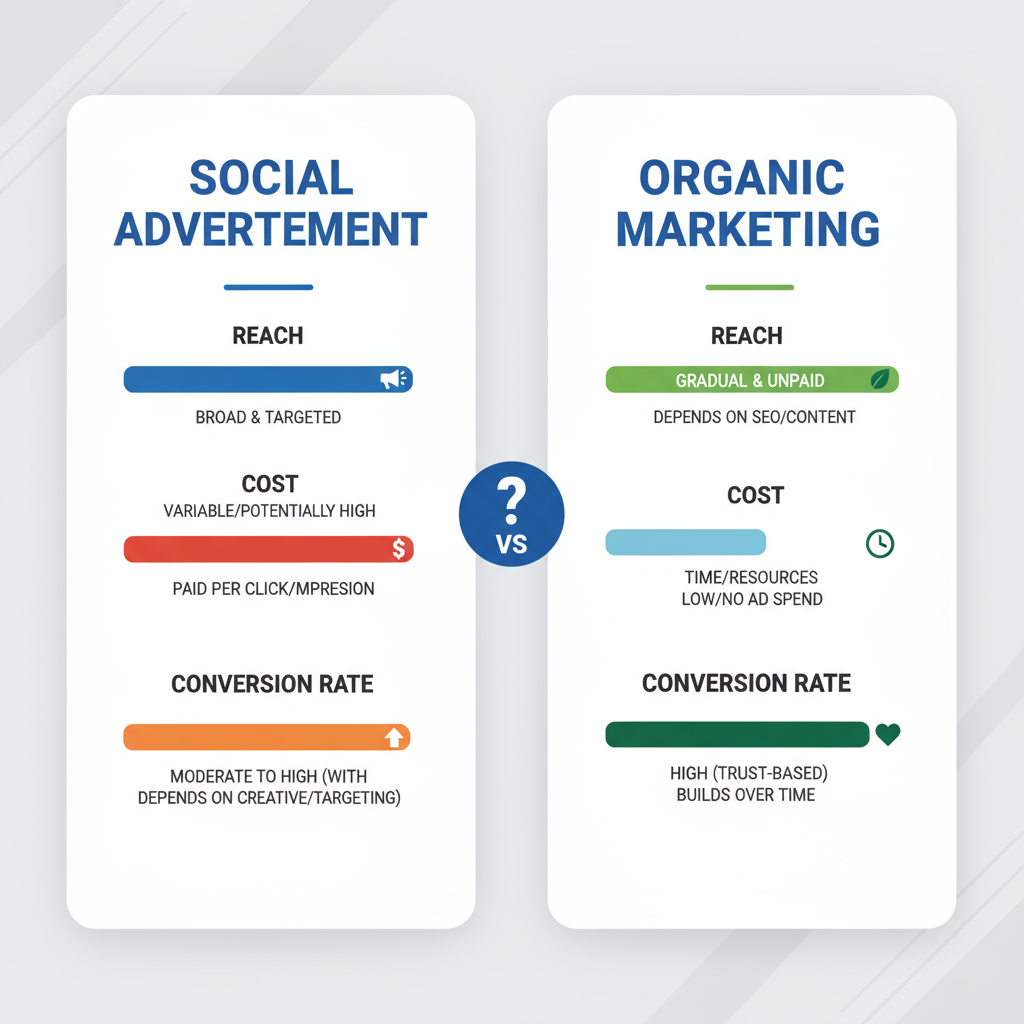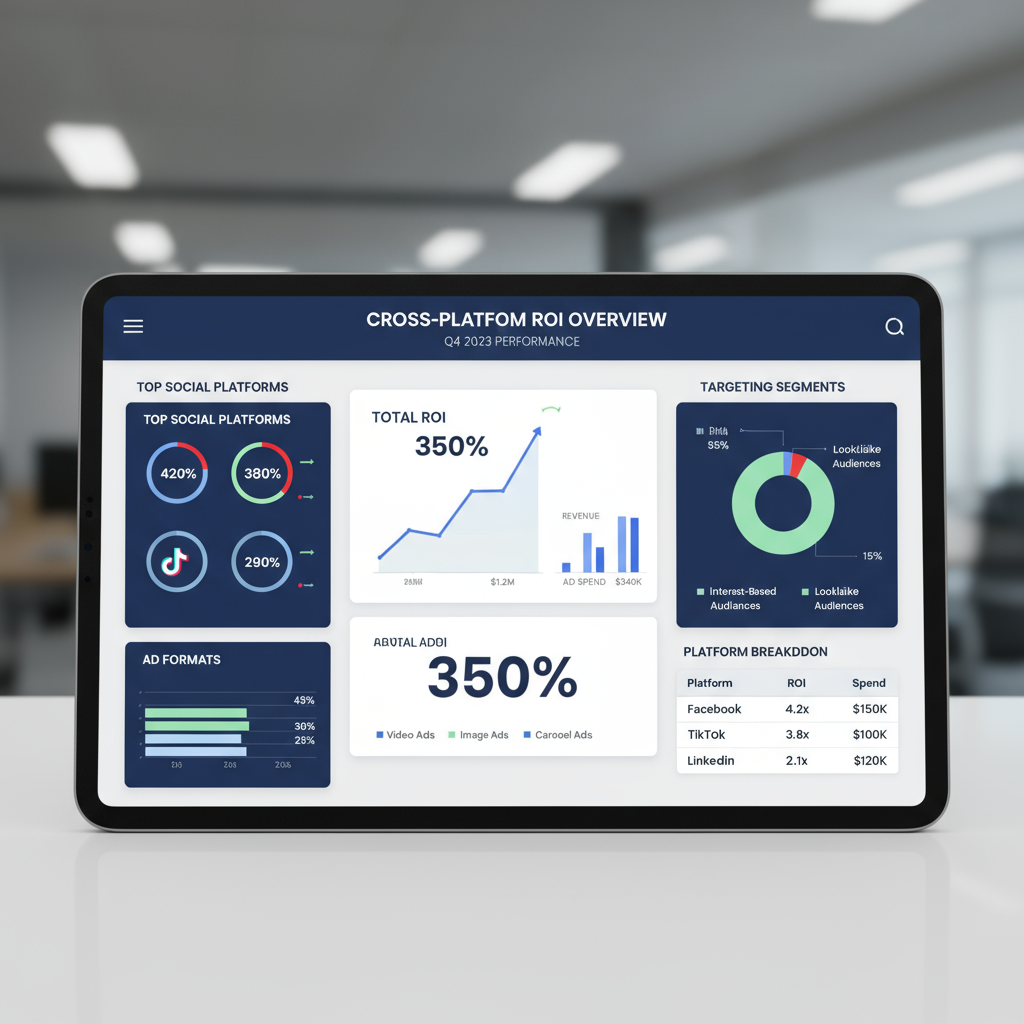Social Advertisement Strategies to Boost ROI
Learn effective social media advertising strategies, from platform selection to creative design, to maximize ROI and engage targeted audiences.

Social Advertisement Strategies to Boost ROI
Modern businesses increasingly rely on social advertisement to drive traffic, conversions, and brand awareness quickly and measurably. Unlike purely organic social media marketing—which depends on unpaid content and gradual engagement—paid social campaigns give marketers the ability to target precise audiences, control ad spend, and optimize for return on investment (ROI). This guide explores effective methods, platforms, and creative approaches to enhance the impact of social ads, helping you achieve better performance across channels.
---
Introduction to Social Advertisement
Social advertisement refers to paid promotions on social media platforms, designed to reach specific audiences and achieve measurable marketing objectives. Organic social media posts may gain traction over time, but algorithms often limit visibility. Paid social ads allow brands to bypass these limitations, ensuring content appears directly in front of desired target segments.

By using budget-backed campaigns and data-driven targeting, social advertisements can accelerate reach, engagement, and conversions—making them a powerful complement to organic efforts.
---
How Social Advertisement Differs from Organic Marketing
Key differences between paid and organic:
- Reach: Paid ads guarantee visibility; organic reach depends on engagement and algorithms.
- Speed: Social ads deliver immediate results, while organic growth can take months.
- Targeting: Paid campaigns can pinpoint demographics, interests, or behaviors; organic relies on followers’ voluntary engagement.
- Measurability: Advertising platforms offer robust analytics; organic analytics are less granular.
---
Top Platforms for Paid Social Ads
Selecting the right platform is critical for a successful campaign. Each caters to different audience behaviors.
| Platform | Main Audience | Best Ad Formats |
|---|---|---|
| Broad demographic, 25–54 age group | Carousel, video, lead ads | |
| Younger audience, visual-first | Stories, reels, carousel | |
| TikTok | Gen Z & Millennials | Short-form video, hashtag challenges |
| Professionals, B2B | Sponsored content, InMail | |
| DIY, lifestyle, female audience | Promoted pins, shopping ads |
---
Setting Clear Campaign Goals
Your campaign goals shape your targeting, creatives, and success metrics. Common objectives include:
- Brand Awareness – Increase recognition in target markets.
- Engagement – Drive likes, shares, comments, or video views.
- Conversions – Capture leads or generate sales.
- Retargeting – Remind those who interacted but haven’t converted.
Well-defined goals prevent budget waste and help measure ROI accurately.
---
Understanding Audience Targeting Options
Social advertisement thrives on precision targeting. Major categories include:
- Demographics: Age, gender, education, job title.
- Interests: Hobbies, preferred brands, topics.
- Behaviors: Purchase history, device usage, event attendance.
- Lookalike Audiences: Automatically created from a seed group of high-value customers.

Platforms like Facebook Ads Manager or LinkedIn Campaign Manager provide advanced targeting capabilities. Start broad and narrow down based on analytics and campaign performance insights.
---
Crafting Compelling Ad Creatives
A strong creative differentiates a successful campaign from a failed one. Principles include:
- High-Quality Visuals: Clear, vibrant images or videos.
- Concise Copy: Capture attention within the first few seconds or words.
- Strong CTA (Call-To-Action): Direct users toward the desired action.
- Brand Consistency: Keep colors, tone, and style aligned with your brand identity.
Example copywriting formula: Problem → Agitate → Solution → CTA. This approach taps into pain points and offers clear resolutions.
---
Utilizing A/B Testing
A/B testing involves running multiple variations of ads to identify the highest-performing elements. Test:
- Headlines
- Images or videos
- CTA text
- Audience segments
Tip: Adjust only one element at a time to isolate its impact.
---
Determining Optimal Ad Formats
Different platforms favor different formats:
| Platform | Optimal Formats | Key Benefits |
|---|---|---|
| Carousel, single image, video | Multi-product showcase, storytelling | |
| Stories, reels, carousel | High engagement, immersive | |
| TikTok | Short clips, branded effects | Viral potential, interactive |
| Sponsored posts, dynamic ads | Professional targeting, lead generation | |
| Promoted pins, shopping | Purchase intent, inspiration-driven |
---
Establishing Budget and Bidding Strategies
To spend efficiently:
- Daily vs. Lifetime Budgets: Daily budgets provide consistent exposure; lifetime budgets allow flexible scheduling.
- Bidding Models: Choose from CPC (cost per click), CPM (cost per mille), or CPA (cost per acquisition).
- Smart Allocation: Start small, scale successful ads.
Automated bidding options adapt in real-time to meet your campaign objectives.
---
Leveraging Analytics Tools
Monitoring KPIs ensures ads are optimized for success:
| Metric | Definition | Why It Matters |
|---|---|---|
| CTR (Click-Through Rate) | Clicks ÷ Impressions | Measures ad relevance |
| CPC (Cost Per Click) | Spend ÷ Clicks | Indicates cost efficiency |
| CPA (Cost Per Acquisition) | Spend ÷ Conversions | Evaluates conversion cost |
| ROAS (Return on Ad Spend) | Revenue ÷ Ad spend | Determines profitability |
Tools like Google Analytics, Facebook Insights, and LinkedIn Analytics allow deeper data analysis.
---
Applying Retargeting Strategies
Retargeting re-engages users who have interacted but not converted.
Types of retargeting:
- Pixel-Based: Uses tracking code to show follow-up ads.
- List-Based: Targets based on email lists.
- Dynamic Retargeting: Displays products/content previously viewed.
Warm audiences from retargeting often convert at higher rates.
---
Trends Shaping Social Advertisement
The social advertisement landscape is evolving. Key trends:
- AI Personalization: Customizes ads in real time.
- Interactive Content: Promotes higher engagement.
- Short-Form Video: Dominates attention spans via TikTok, Instagram Reels, and YouTube Shorts.

Early adopters of these trends gain notable competitive advantages.
---
Common Mistakes to Avoid
Avoid pitfalls such as:
- Poor Targeting: Wastes budget.
- Low-Quality Visuals: Hurts credibility.
- Ignoring Mobile Optimization: Most users access via mobile devices.
- Neglecting Testing: Prevents informed improvements.
- Overlooking Analytics: Leads to guesswork over data-driven decisions.
---
Future Outlook of Social Advertisement in Digital Marketing
Expect growth in:
- Automation: AI adjusting campaigns dynamically.
- Platform Integration: Social ads syncing with e-commerce systems.
- Enhanced Privacy Measures: Adapting to regulations while maintaining relevance.
- Cross-Platform Strategies: Coordinated creatives across multiple networks.
---
Conclusion
Social advertisement remains one of the most effective digital marketing tools due to its precision targeting, scalability, and measurable ROI. Brands that invest in clear goals, creative testing, and the adoption of emerging trends can build stronger customer relationships and outperform competitors.
Ready to boost your ROI with targeted social ads? Start implementing these strategies today and track your results to continually refine performance.

